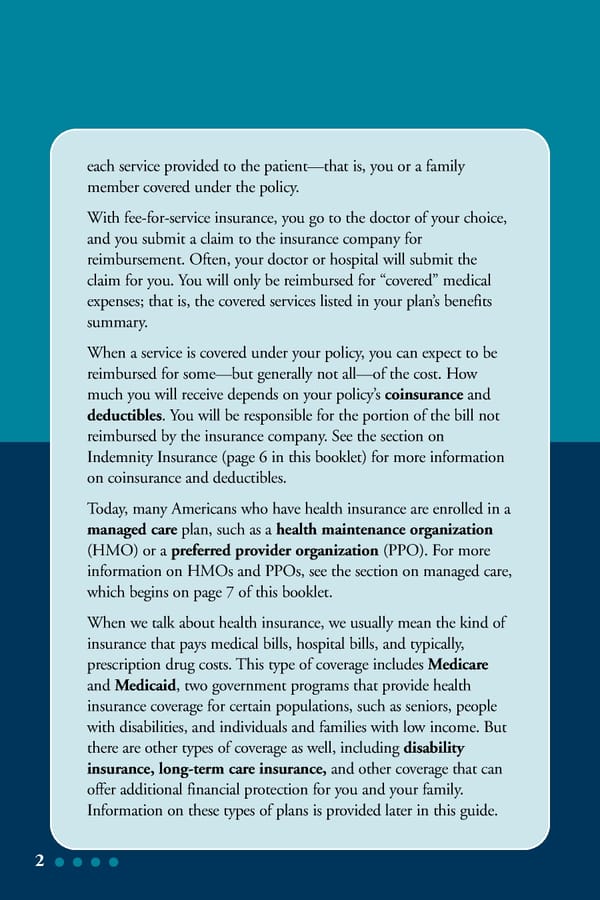each service provided to the patient—that is, you or a family member covered under the policy. With fee-for-service insurance, you go to the doctor of your choice, and you submit a claim to the insurance company for reimbursement. Often, your doctor or hospital will submit the claim for you. You will only be reimbursed for “covered” medical expenses; that is, the covered services listed in your plan’s benefits summary. When a service is covered under your policy, you can expect to be reimbursed for some—but generally not all—of the cost. How much you will receive depends on your policy’s coinsurance and deductibles. You will be responsible for the portion of the bill not reimbursed by the insurance company. See the section on Indemnity Insurance (page 6 in this booklet) for more information on coinsurance and deductibles. Today, many Americans who have health insurance are enrolled in a managed care plan, such as a health maintenance organization (HMO) or a preferred provider organization (PPO). For more information on HMOs and PPOs, see the section on managed care, which begins on page 7 of this booklet. When we talk about health insurance, we usually mean the kind of insurance that pays medical bills, hospital bills, and typically, prescription drug costs. This type of coverage includes Medicare and Medicaid, two government programs that provide health insurance coverage for certain populations, such as seniors, people with disabilities, and individuals and families with low income. But there are other types of coverage as well, including disability insurance, long-term care insurance, and other coverage that can offer additional financial protection for you and your family. Information on these types of plans is provided later in this guide. 2
 Health Insurance Q&A Page 5 Page 7
Health Insurance Q&A Page 5 Page 7